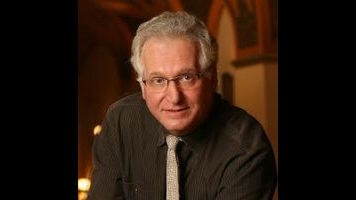The Secret Life Of The American Musical reduces the stage to a formula

As she launched into the second chorus [of Pipe Dreams’ Sweet Thursday], and began a gentle, three-person soft shoe, I could swear the floor fell away from me, I was suspended in midair, and I thought I felt the almost two thousand patrons of City Center having the same experience. We were floating, en masse, watching a star be a star. If I could tell you why that happened, I would.
That’s why the form has endured. And that’s why it’s worth talking about the mechanics that help make it happen.
—The Secret Life Of The American Musical
The Secret Life Of The American Musical is a book about musicals in the bluntest possible sense, so much so that the title is misleading. Those who pick it up looking for salacious stories of “shomances” and scandal will be disappointed, as will those looking for a history of the form or an Act One-style memoir of author Jack Viertel’s long career in the theater—as a producer, artistic director, dramaturg, and book writer (for Time And Again). Instead, it is a step-by-step guide through what Viertel views as the prototypical musical story structure, one he argues can be more or less applied to any notable show of the past 100 years (he focuses on Oklahoma!, Fiddler On The Roof, Guys And Dolls, Hairspray, and The Book Of Mormon, among others). The first chapter is on overtures, the second on opening numbers, the third on protagonist-introducing “I Want” songs, and so on.
To the extent it recalls anything, Secret Life most closely resembles Stephen King’s On Writing, which featured some personal detail but focused on the nitty-gritty of his craft. Secret Life—which is filtered through Viertel’s experiences and autobiography, though to a smaller extent—is similarly focused on minutia, but only as it pertains to structure. Other key elements of mounting a production—casting, choreography, design—are discussed only in relation to how they reflect on the story. So unless a crucial narrative element is telegraphed solely through the callback of a musical theme, for example, that entire discipline goes unmentioned.
Despite that limited perspective, Secret Life is thoroughly interesting, especially when Viertel recounts how now-classic shows worked out their kinks. Early audiences failed to take to Fiddler or A Funny Thing Happened On The Way To The Forum, he explains, until their creators reconfigured the opening numbers to better establish the shows’ tone and themes.
The more Viertel sticks to this, the stronger the book is. Other passages are based more on theory than examples, which gets dry. Theater fans may find Secret Life too practical in large stretches, while aspiring Sondheims will find its insights banal (“don’t dedicate two consecutive scenes to a subplot”). Mostly what’s intriguing is the argument that a show’s success is tied to how well it follows and executes traditional structure. Hairspray, he posits, “succeeds with general audiences while the original film remains only a cult classic because the show has real architecture in addition to a real subject.” Hamilton, whose inclusion must’ve just squeaked in under the wire, works because it is “secure that its insurgent style will only be helped by adhering to the classic niceties of getting a show off the ground”—that is, introducing characters and themes in a conventional fashion, albeit with a nontraditional score. He quotes a producer’s unromantic reasoning for this: “[Audiences] want to know who the show’s about? We better tell them. They want to know what it’s about? We also have to tell them that—before they lose interest altogether. They want to pee at 9:20? We’d better arrange for that, too. We’re charging a lot of money here, and the bathrooms are small.”
The bluntness of the argument makes it worth exploring. Musical theater is unique among art forms, not least in the symbiotic relationship between performers and live viewers, and a lot of Viertel’s views are based around this. When he discusses Company, a show “built around an idea instead of a story,” he describes how creator Stephen Sondheim moved his pieces around in an attempt to manipulate the crowd’s expected energy levels: “The placement of the songs was in some ways up for grabs and ended up having more to do with controlling the biorhythms of the audience than with revealing specific story information at a specific time.” Musicals, Viertel adds, “are allowed—even required—to defy the logic of storytelling and operate on the other part of the brain—the part that responds to color and light, rhythm, and pace.” If that means shoehorning in a showstopper, so be it.
His biggest flaw is that he offers up a slippery definition of what makes a show successful. The acclaimed Passing Strange and Bloody Bloody Andrew Jackson are both deemed failures because they were “formless” and failed to find “large, appreciative audiences.” Meanwhile, the commercially successful Camelot is a failure because it tweaks structure in a way he doesn’t like. (The “I Want” song is about desiring solitude, as opposed to something more sympathetic.) Successful shows that don’t fit his argument—Hedwig And The Angry Inch and The Last Five Years spring to mind—are omitted rather than analyzed (and as you might guess from the title, so are British shows, so no Les Misérables or Andrew Lloyd Webber). He freely admits that his tastes run conservative (And admits, “I also tried to boo Bob Dylan off the stage at Newport in 1965. For shame.”), but that’s not the same as being comprehensive or challenging one’s self.
Still, Viertel marshals plenty of examples to support his thesis, and his arguments are clear and engaging even when focused on obscure elements. There’s just something very pleasant about reading someone intelligently and affectionately look at what make a show tick, beat by choreographed beat.